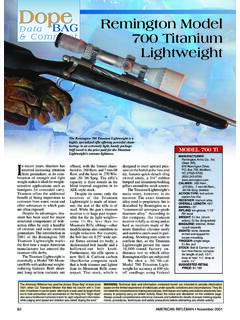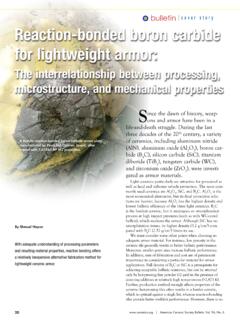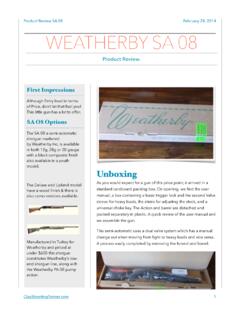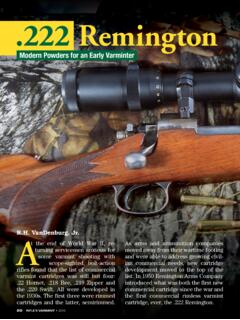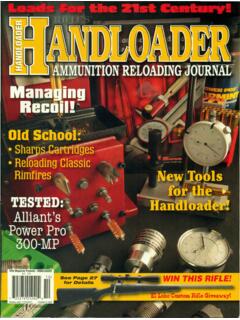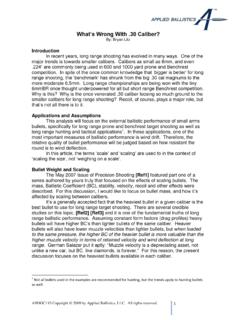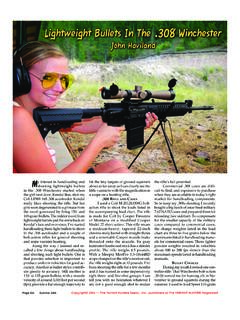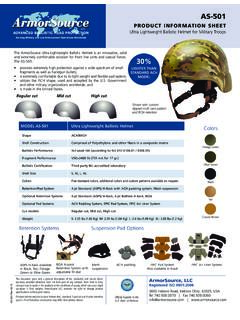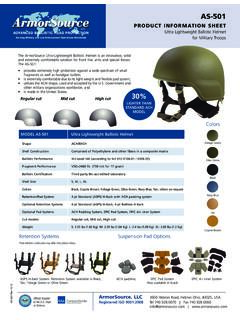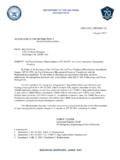Transcription of The Los Angeles Silhouette Club - lasc.us
1 1 The Los Angeles Silhouette Club This article written for The Los Angeles Silhouette Club For publishing on Thanks Glen, another great article. The 357 Maximum By: Glen E. Fryxell I wasn't there, so I can't say for sure, but I've got a feeling that marksmanship competitions have been around ever since that second cave-man learned how to throw a rock. Almost certainly, these competitions started off just aiming at some random target of opportunity, but then likely evolved into a test to see who could knock something down ( knock a pine cone down out of a tree, knock over a piece of firewood, knock a deer skull off a hillside, etc.)
2 Mankind has long been fascinated with the accurate placement of a projectile onto a remote target, and to have that target respond to the impact. The roots of Silhouette competition run deep through human history. We also like to eat. Year's ago, a group of shooters in Mexico started tethering barnyard animals (goats, chickens, pigs, etc.) out at braggin' distances, and shooting at them as a part of a larger social event. When an animal was killed, it was butchered and thrown on the grill for the post-match festivities. Eventually, humanitarian concerns arose surrounding the occasional crippled beast, leading to the animals' silhouettes being cut out of steel and the critters left in the barn.
3 The pigs and goats were slaughtered cleanly and humanely back in the barn and were grilled behind the firing line while the competitors fired their relays, and salivated over the aromas emanating from the fire-pit. Formal Silhouette competition came about in the mid-1970s and was led by such handgun pioneers as Lee Jurras, Hal Swiggett, Elgin Gates and John Adams (John Adams was the first President of IHMSA, founder of LASC and owner of SAECO bullet Moulds). IHMSA Silhouette competition experienced dramatic growth in the 1980's, and is still an active and fun form of shooting competition today.
4 Some venues have even maintained the tradition of cooking barbeque to distract the shooters olfactory senses while they concentrate on the mantra "sight picture, trigger sight picture, trigger man! that sure smells good!". As with any form of competitive shooting, once the game got rolling, the hardware gurus started tweaking the tools for a competitive edge. There was a great deal of experimentation going on the in world of Silhouette handguns and cartridges in the early 1980s. The .357 Magnum was considered an absolute minimum cartridge to be competitive, but it would sometimes still leave full-footed rams standing.
5 Elgin Gates was among the Silhouette pioneers building new guns and developing new wildcat cartridges at this time. As a part of his experimentation, he developed the SuperMag series of cartridges specifically for revolvers (he also had an extensive line of wildcats for single-shots, like the XP-100 and T/C Contender). The idea was to increase the downrange momentum by increasing case length to " (thereby increasing case capacity) to drive heavier bullets faster, but still have a relatively compact revolver, with modest recoil. Gates developed SuperMag cartridges in .357, .375, .414 and.
6 445 calibers. Basically, the .357 SuperMag was born specifically to knock over the stubborn full-footed rams on the 200 meter line. Rarely has a cartridge ever been born into such a specific ballistic niche. Usually new cartridges are developed and marketed to address multiple applications in order to maximize sales, but the .357 SuperMag was born to bust steel, period. No military applications, no law enforcement applications, no bullseye or PPC, no IPSC, no cowboy action shooting, and while it is a capable hunter, it was (and always has been) overshadowed by the tremendous success of the.
7 44 Magnum in the hunting fields, making the more modest hunting capability of the .357 Maximum little more than an after-thought initially. It was born to topple steel. It succeeded admirably. In 1983, Elgin Gates SuperMag concept was commercialized in the form of the .357 Remington Maximum cartridge, with ammunition being made by Remington and a stout single-action revolver based on a "stretched" Super Blackhawk frame being made by Sturm Ruger & Co. Dan Wesson followed suit with a double-action revolver, Seville with another SA sixgun, and Thompson /Center with their single-shot break-action Contender.
8 Federal also made brass for the .357 Maximum. The stage was set for success. So what happened? Initially, there was a surge of interest in taking light bullets and trying to drive them as fast as possible with the .357 Max. This is counter-productive. These short stumpy bullets are ballistically inefficient and shed velocity quickly, and provide poor terminal performance. These loads also tend to be the ones that accelerate top-strap cutting and forcing cone erosion (especially with W296/H110). Like any Magnum, the reason for the .357 Maximum's existence is not to take lightweight bullets and drive them ultra-fast, but rather to take heavier than normal bullets and drive them as fast (or faster) than the standard cartridge drives standard weight bullets.
9 The .357 Max does its best with bullets weighing 175 grains and up. The top-strap cutting and forcing cone erosion that resulted from these experiments rattled the folks at Ruger, and the .357 Maximum was dropped from production after only about 9,000-10,000 were made. The negative PR also damaged the sales of Dan Wesson revolvers. They tried to counter it by offering a second barrel with the gun, but that didn't help much. The popularity of the .357 Maximum was waning. Which is too bad, because all that was really needed was an under-The Ruger .357 Maximum Super Blackhawk revolver, built on a stretched Super Blackhawk frame.
10 This revolver was available in 7 1/2" and 10 1/2" barrel lengths. 2 3standing of how to properly load the cartridge, and to recognize that top-strap cutting is a self-limiting process that stops after it reaches a certain point. In terms of hunting applications, the .357 Maximum is far more cartridge than is needed for varmint hunting, and is too light for elk and black bear. For the handgun hunter who prefers to hunt with a revolver it is suitable for deer and antelope when loaded with the right bullets. For Silhouette competition, cast bullets are a natural choice for their accuracy, higher velocities at lower pressures, kindness to barrel steel and affordability.



